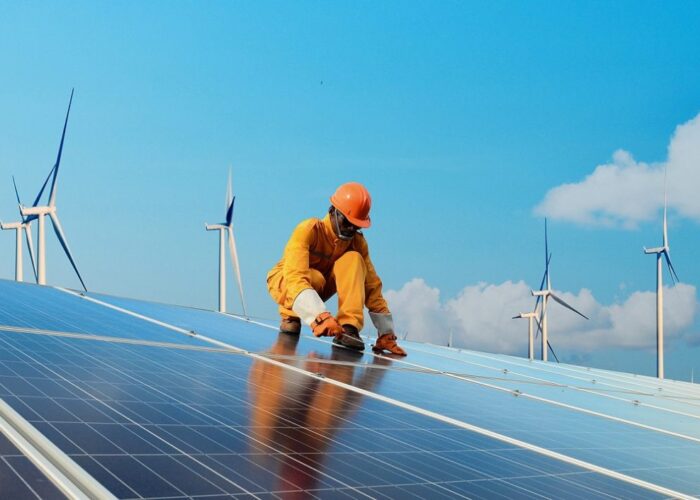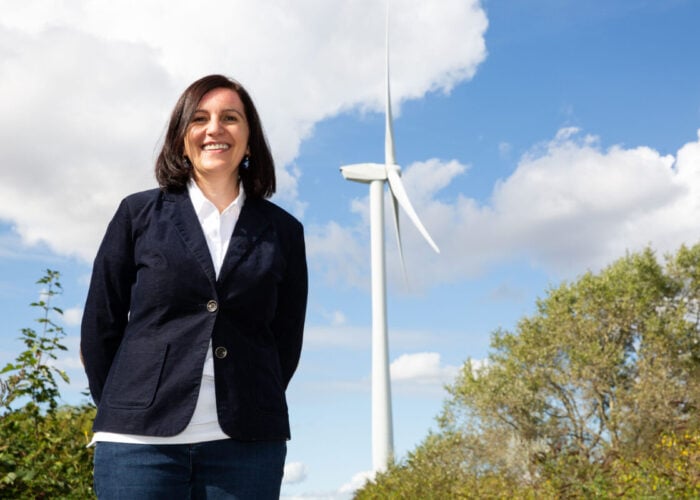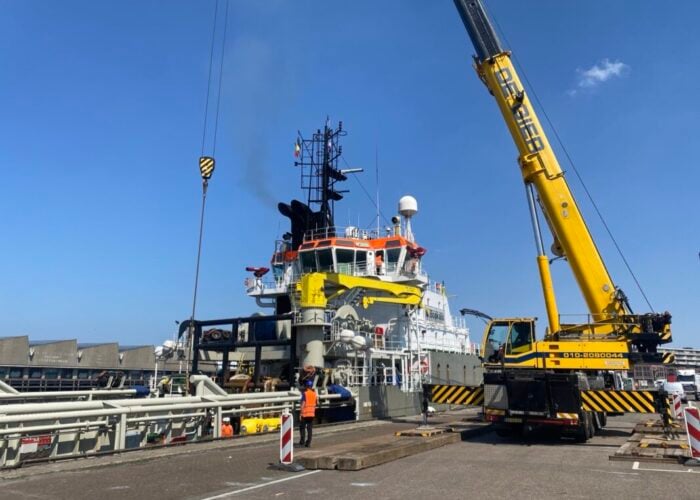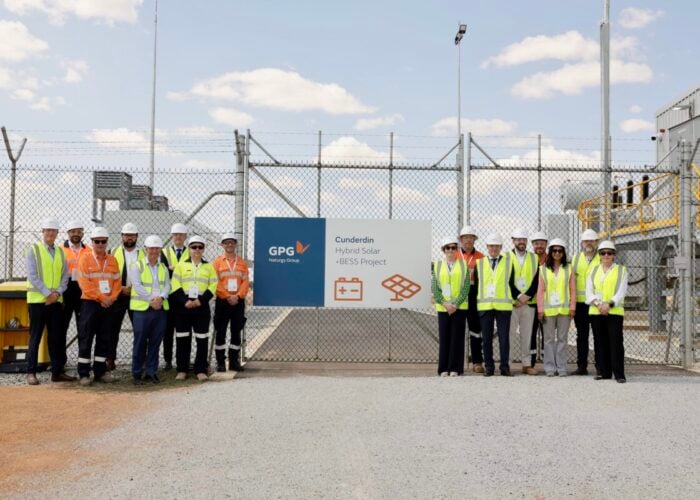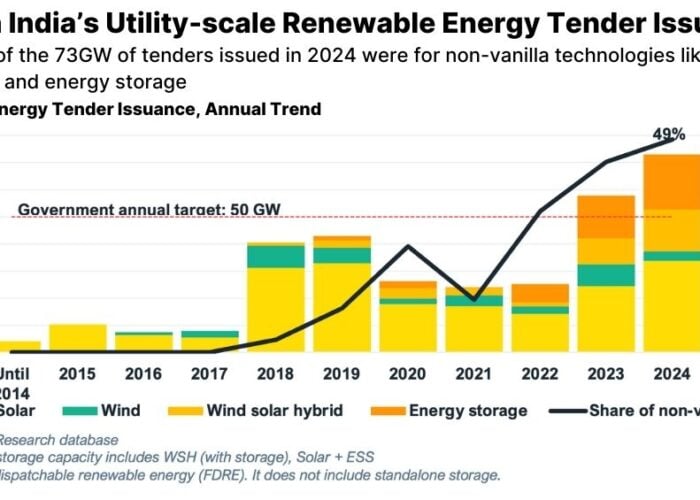
The global energy storage and hybrid power space has witnessed plenty of action over the past year, with remote power specialist companies acquiring energy storage technologies and lithium-ion batteries continuing on their downward price trajectory. This has made more electrochemical energy storage installations possible globally in the last year than ever before. The latest entrant into this space is Sterling and Wilson, an Indian multinational engaged in engineering, construction, manufacturing and energy services, which recently announced its foray into hybrid power plants and energy storage solutions.
PV Tech caught up with Vish Iyer, global head of business development, strategy and marketing for the Hybrid and Energy Storage division at Sterling and Wilson, to find out more.
Unlock unlimited access for 12 whole months of distinctive global analysis
Photovoltaics International is now included.
- Regular insight and analysis of the industry’s biggest developments
- In-depth interviews with the industry’s leading figures
- Unlimited digital access to the PV Tech Power journal catalogue
- Unlimited digital access to the Photovoltaics International journal catalogue
- Access to more than 1,000 technical papers
- Discounts on Solar Media’s portfolio of events, in-person and virtual
How do you envision the rate of development of energy storage technologies globally?
Vish Iyer: Every major grid with large amounts of renewable energy penetration across the globe is talking about the need for energy storage. This is happening in developed economies first because they have sophisticated grid and power tariff management systems, which allow them to make best use of storage as a dispatch asset, while some emerging economies are just finding their feet. However, therein lies the entire value because countries that leapfrog technology adoption curves, such as India – as it has with the solar revolution and previously the telecom sector – provide a good opportunity to catch the gem in storage as well.
What will make Sterling and Wilson stand out in the energy storage and hybrid solutions market globally?
With our capabilities as a gas and CHP solutions provider with over a gigawatt of commissioned capacities in Europe, a leading diesel solution provider across Asia, Middle East and Africa, besides being a top global solar EPC, we cover all the major geographies of the world that are embracing the exciting energy storage transition. This makes us possibly one of the very few infrastructure companies specialising in turnkey energy solutions globally that can compete across technologies (gas, CHP, solar, diesel), across geographies and bring to the fore the most potent combination of renewable and gas-based hybrids besides augmenting grids, data centres and existing power plants with energy storage.
What strategic areas are you focusing on?
We are focussing on two areas: First, in the area of grid balancing, transmission support, demand charge management and time-of-usage (ToU) applications irrespective of whether they are applications behind-the-meter or front-of-the-meter. Secondly, focussing on delivering turnkey hybrid power solutions, which is of immense requirement in remote power installations such as island nations, most of which either cannot afford the kind of diesel or fuel import costs that exist at this particular stage, or have mandates to move away from heavy carbon footprint in order to meet climate change goals.
Where does Sterling and Wilson find that balance between the need for energy storage to deal with, for example, renewable integration, climate concerns and energy security, while ensuring that this business stays commercially attractive?
It’s quite simple to understand the commercial attractiveness besides the humane concerns on climate change, if the example of island nations is taken as a case in point. Islands which are most threatened by the pace of climate change are also typically places with high power tariffs, take for example the Solomon Islands or American Samoa, which has already had Tesla installations in 2016. Further more, we have examples such as the Philippines, which again has around 17,000 islands, and a there are a few thousand more in Indonesia and the Maldives.
You can see that the lowest hanging fruit for energy storage and hybrid power installs, apart from developed economies with sophisticated grids, is in economies where the cost of power is high, because of the import costs of fuel. These are easily the first access markets for storage and with the penetration of renewable or gas-plus-storage and diesel or a combination of multiple green power sources with some fossil power mixed in; that’s a sweet spot to focus on, while helping these nations alleviate environmental concerns.
Is it then fair to say that your hybrid focus is paired with an aim to increase penetration of energy storage? What other segments besides say the island nations could be an opportunity for Sterling and Wilson as far as your Hybrid push is concerned?
Yes and No. While the focus would be on pairing energy storage with a clutch of power generation technologies to result in a low LCOE for an end client, we have seen evidences of specific sectors of industry globally such as Mining and C&I sectors where hybrids could be offered with or without any additional energy storage depending upon the application, need for energy storage and the existing cost and carbon benchmarks to be targeted.
For example, both Africa and Australia have very pertinent segments of clientele, particularly in the mining and private sectors. There are large off-grid operations with Commercial and Industrial (C&I) entities, which rely on a lot of standby power, often as the main power source. This means Sterling and Wilson can essentially attack diesel costs. The first target is to start with displacing a certain amount of diesel, because quite frankly in most remote installations, fossil fuel-based power is tough to be completely replaced given the present cost and carbon economics of alternative options. Therefore, you may not be able to eliminate it at this stage, but at least the opportunity is there to decarbonise some part of the footprint. We can start the process, hoping to get there with a further fall in solar, wind and energy storage costs globally over the next few years.
Finally, where do you think the energy storage market is if you needed to separate the real progress from the hype?
We are still catching energy storage at the early stage of the evolution. Frankly, in spite of the widely proclaimed doubling of global installations of electrochemical energy storage over the past two years, the space hasn’t really picked up pace as much as an energy storage aficionado would like it to. There’s still plenty of room for cost reductions and the way EVs are set to pick up across the globe over the next 5-8 years, we could see 30-40% cost reductions annually in the key component – the battery – which might single-handedly prove to the key for growth of this space.

